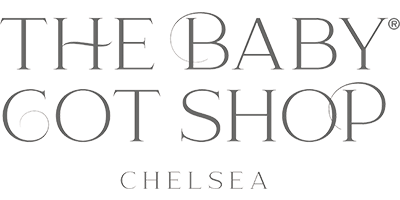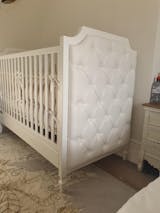As a parent, you want to provide the very best environment for your child to grow and thrive in. This includes creating a nursery and living space that is not only safe and comfortable, but also kind to the planet. In today's world, where environmental concerns are at the forefront of global discourse, creating an eco-friendly space for your baby is not just a choice, but a responsibility. Going green with your baby's space isn't only good for the environment, as it can also benefit your child's health and development. Babies are more vulnerable to toxins and chemicals, and an eco-friendly space is free from harmful substances that can cause health issues. In this guide, we will walk you through a variety of eco-friendly strategies to transform your baby's room and home into a sustainable space. From non-toxic furnishings to energy-efficient lighting, you'll find practical tips to make your space as eco-friendly as can be. Let's get into it, shall we?
Choose Safe, Sustainable Furniture
The furniture you select for your baby's nursery is one of the most important considerations when creating an eco-friendly space. Some conventional cots, dressers, and other nursery items are made with materials and finishes that can off-gas harmful chemicals, exposing your baby to toxins. Go instead for solid wood furniture made from sustainably harvested timber. Look for pieces finished with natural, non-toxic stains and paints. Sustainable choices like bamboo and cork are also excellent options, as they are renewable, biodegradable resources. Avoid pressed woods, laminates, and furniture with synthetic fabrics or flame retardants.
When shopping, be sure to thoroughly research any product's materials and manufacturing process. Eco-labels like GREENGUARD, OEKO-TEX, and FSC certification can help you identify furniture that meets strict environmental and safety standards.
Use Organic, Natural Fabrics
The fabrics used in your baby's nursery — from beddings to curtains — can have a big impact on indoor air quality. Some textiles are treated with harsh chemicals, dyes, and finishes that can be harmful, especially for sensitive infant skin. Always look for certified organic cotton, linen, and wool textiles that are free of pesticides, synthetic dyes, and other additives. These natural fibres are not only better for the environment, but also incredibly soft, breathable, and gentle on your baby's delicate skin. Additionally, you can always check that any fabric you purchase is certified by the Global Organic Textile Standard (GOTS) or the Organic Content Standard (OCS). These seals assure that the item was produced using sustainable, ethical practices throughout the entire supply chain.
Embrace Non-Toxic, Eco-Friendly Decor
Beyond furniture and textiles, there are many other ways to incorporate eco-friendly elements into your baby's nursery design. When selecting accessories, artwork, storage solutions, and other decorative items, seek out pieces made from natural, recyclable, or repurposed materials. For example, opt for woven baskets, wooden shelves, and plant-based artwork instead of plastic bins, particle board shelving, and mass-produced prints. You can even DIY some nursery decor using salvaged or upcycled materials. Get creative with vintage finds, reclaimed wood, and other sustainable sources.
When it comes to paint, primers, and other finishes, be sure to choose low- or zero-VOC (volatile organic compound) products. These eco-friendly alternatives release far fewer harmful airborne chemicals compared to standard paints and coatings.
Light with Energy-Efficient Solutions
Lighting is an often-overlooked aspect of eco-friendly nursery design, but it can make a big difference in your home's carbon footprint. Traditional incandescent bulbs are incredibly energy-intensive, so swap them out for LED or compact fluorescent (CFL) options instead. LEDs in particular are a smart, sustainable choice, as they use up to 75% less energy than conventional bulbs and last significantly longer. Plus, many LED lights now come with warm, soft colour temperatures that are ideal for a soothing nursery atmosphere.
You can also maximise natural light by positioning the crib or seating area near windows. In doing so, you not only reduce the need for artificial lighting, but you also provide lovely views and a connection to the outdoors for your baby.
Purify the Air with Houseplants
Improving indoor air quality is crucial when creating a healthy, eco-friendly nursery. In addition to avoiding toxic materials, you can actively cleanse the air by incorporating houseplants into your decor. Certain plants are renowned for their air-purifying properties, removing common nursery pollutants like formaldehyde, benzene, and trichloroethylene. Some excellent options include snake plants, English ivy, Boston ferns, and peace lilies. Position them throughout the room to help filter the air your baby breathes.
Houseplants do not only clean the air. They also have a calming, natural aesthetic that can aid in soothing and relaxing your baby. Use non-toxic, pet-safe varieties and keep them out of reach to prevent any potential hazards.
Minimise Energy and Water Usage
Beyond the physical environment, you can also make your nursery more eco-friendly by implementing energy and water conservation strategies. Simple changes, like using a programmable thermostat and turning off lights when not in use, can significantly reduce your carbon footprint. For heating and cooling, use certified appliances and systems that meet high efficiency standards. In the bathroom, install low-flow showerheads and taps to minimise water usage during diaper changes, baths, and other routine tasks.
Reduce Waste
Disposable diapers, wipes, and other single-use baby products can create a tremendous amount of waste. To lessen your environmental impact, seek out reusable, biodegradable alternatives whenever possible. Cloth diapers are an excellent eco-friendly choice, as they can be washed and reused hundreds of times. You can also find compostable wipes made from plant-based materials. For other nursery necessities like bibs, burp cloths, and changing pads, go for organic cotton or bamboo options.
Additionally, be mindful of packaging when purchasing baby products. Look for items with minimal, recyclable packaging to cut down on unnecessary waste. Many eco-friendly brands prioritise sustainable, responsible packaging as part of their overall mission.
Transforming your baby's room and living spaces into an eco-friendly space takes some effort, but the benefits are well worth it. Not only will you be doing your part to protect the planet, but you'll also be providing your child with a safe, nurturing environment to grow in. Going green in the nursery doesn't have to be an all-or-nothing endeavour. Start small by swapping out a few key items, then gradually integrate more sustainable solutions over time. Every little change you make can have a positive impact on your baby's health and the health of our shared environment. Your baby will thank you. Nature will, too.
P.S.: Whether you're looking to start an eco-friendly nursery from scratch, or you want to swap out existing pieces in your baby's nursery for more sustainable options, The Baby Cot Shop is the perfect place for you. With a range of products that are OEKO-TEX®️ certified, and made from baby-safe, organic materials, a trip to our showroom at 408 King's Road, Chelsea, London, SW10 0LJ gives you access to just the right fits for your baby's space. And if a walk-in is not possible, you can browse our collections and shop with us from wherever you are in the world, using our virtual concierge and personal shopping services. We see your efforts in creating a safe space for your child and making the planet a much better place. We've got you. Come get The Baby Cot Shop Experience today.


